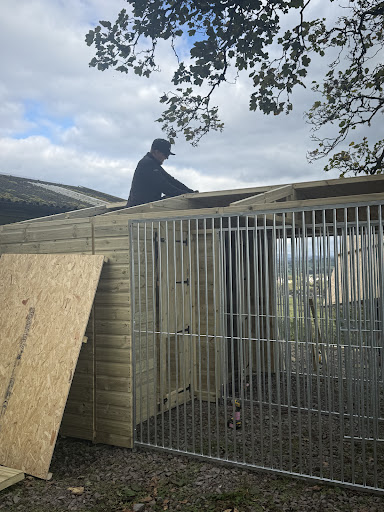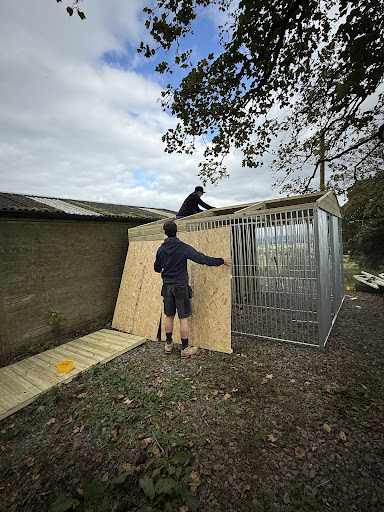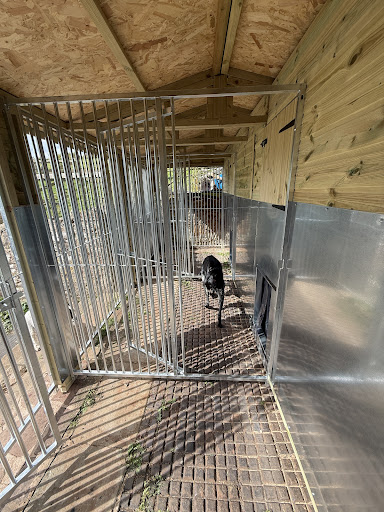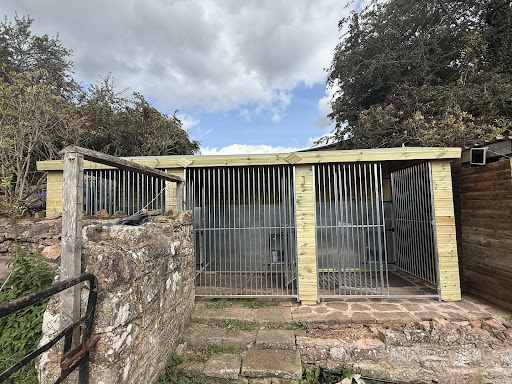It can be surprising the first time you notice your dog happily trotting into his kennel and settling down without being asked. Many owners find themselves wondering, “Why does my dog put himself in his kennel?” The good news is that in most cases, this behaviour is perfectly normal and even positive. Research shows that 64% of dog owners who continue crate training beyond puppyhood report fewer behavioural issues, which proves just how valuable and comforting a kennel can be when used the right way.
This means your dog isn’t being unusual at all. He’s simply treating his kennel as his own little room where he can relax and recharge. In this post, we’ll look at the reasons why dogs choose to spend time in their kennels, when you should be concerned, and how you can make sure your dog’s kennel always feels like the best place in the house.
The Value of a Crate
Before we can answer the question, why does my dog put himself in his kennel, it’s important to understand the role a crate or kennel plays in a dog’s life. A kennel is much more than just a place to rest. It becomes your dog’s own personal “room.” Just as we like having a bedroom where we can close the door and relax, dogs often enjoy having a small, secure space to retreat to when they’re tired or simply need a break from daily life.
Crates and kennels also serve a practical purpose. They are very helpful during training, especially for housetraining young puppies or newly adopted dogs. A well-used kennel can make travel easier, help dogs adjust to staying in hotels, and even reduce stress when visiting the vet. When introduced in a positive and gradual way, a kennel is never cruel. Instead, it offers your dog comfort and consistency in different situations.
Making the Crate a “Great” Place / Building a Positive Habit
If your dog already puts himself in his kennel, that means he has built a positive association with the space. To strengthen this habit, it’s important to keep reinforcing the kennel as a welcoming, enjoyable place. One way to do this is by offering rewards inside, such as giving your dog his favourite treats, chew toys, or even feeding meals in the kennel. When food and fun are linked to the kennel, your dog learns that good things happen there.
Comfort also plays a big role. A soft blanket, a cozy bed, or even a blanket warmed in the dryer can make the kennel feel extra inviting. Many owners also keep special treats, like a stuffed Kong with peanut butter, as a kennel-only reward. By saving the best snacks for kennel time, you make the space feel extra special.
The location of the kennel also matters. Dogs are social animals, so placing the kennel in a busy part of the home, like the living room, means your dog doesn’t feel isolated when resting. And remember, consistency is key. If the kennel is only used when you leave the house, your dog may start to associate it with being left alone. Instead, encourage short daily sessions while you’re home so the kennel becomes a normal and enjoyable part of your dog’s routine.
The Root of the Behavior
So, why does my dog put himself in his kennel? At first, it might feel strange to see your dog choosing the kennel over playtime, attention, or even treats. But in reality, this behaviour is often a sign of comfort rather than concern. Dogs are instinctive creatures, and just like people, they have moods, needs, and moments when they want their own space.
In most cases, your dog putting himself in his kennel is perfectly healthy and natural. It’s his way of saying, “This is my spot, and I feel good here.” Still, there are a few important reasons behind this behaviour that every dog owner should understand. Recognising which one applies to your dog will help you respond in the right way.
Your Dog Feels Safe There
Dogs are naturally drawn to small, enclosed spaces because they resemble dens. A kennel gives them the same sense of safety and security that they would find in the wild when seeking shelter. For many dogs, it feels like their bedroom, a private space where they can rest without interruption. If your household is busy with children, guests, or a lot of activity, your dog may put himself in his kennel to enjoy some peace and quiet.
Your Dog is Sick
Sometimes, a dog may choose to retreat into his kennel because he isn’t feeling well. If you notice your dog is spending far more time inside than usual, refusing food, avoiding play, or showing little interest in walks, it could be a sign of illness. Dogs instinctively hide away when they feel unwell, so this change in behaviour should never be ignored. If you see these warning signs, it’s time to book a vet visit.
Your Dog is Waiting for Food
Many dogs are quick to learn patterns in their daily routine. If you often feed or give treats inside the kennel, your dog may be putting himself in his kennel because he’s expecting something tasty. This is actually a positive association, as it shows that your dog connects the kennel with good experiences. Just be careful not to overdo it with treats, as too many calories can lead to weight gain. Instead, focus on using part of his normal meals or healthy snacks to reward kennel time.
Why Does My Dog Put Himself in His Kennel?
In conclusion, if you’ve ever wondered, “Why does my dog put himself in his kennel?” the answer is usually a positive one. Most dogs put themselves in their kennel because they feel safe, comfortable, and secure in a space that is all their own. A kennel can act as a bedroom, a retreat when the household gets busy, or even a place of comfort when your dog is tired or anxious. At times, it can also signal that your dog is waiting for food or, in rare cases, feeling unwell. By making the kennel a warm, rewarding, and consistent part of your dog’s daily life, you can encourage healthy habits and keep it as a sanctuary rather than a place of stress.
If you’re ready to create the perfect safe space for your dog, visit Benchmark Kennels today and discover how our designs can make your dog’s kennel the safest, most comfortable spot in your home.
Is it normal if my dog puts himself in his kennel a lot?
Yes, in most cases it’s perfectly normal. It means your dog sees his kennel as a safe and comfortable place. Just like people, dogs sometimes enjoy downtime in their own space.
Should I worry if my dog refuses to come out of his kennel?
If it happens occasionally, there’s usually no need to worry. Your dog might just want quiet time. However, if your dog regularly refuses to come out and is also skipping meals, ignoring play, or avoiding the outdoors, it could signal illness or stress. A vet check is recommended.
How long can I leave my dog in his kennel?
Experts generally recommend no more than four hours at a time during the day. Puppies need much more frequent breaks because of their small bladders. Overnight is usually fine as long as your dog is comfortable.
How can I make my dog love his kennel even more?
Make the kennel a cozy, positive place. Offer rewards, keep it warm and inviting, and allow your dog to use it freely. Never use the kennel as punishment, or you risk undoing the positive feelings your dog has built.
Why does my rescue dog avoid the kennel?
Some dogs may have had negative experiences in kennels before being adopted. In this case, patience is key. Introduce the kennel slowly, use rewards, and keep the experience positive. Working with a trainer may also help rebuild trust.

























